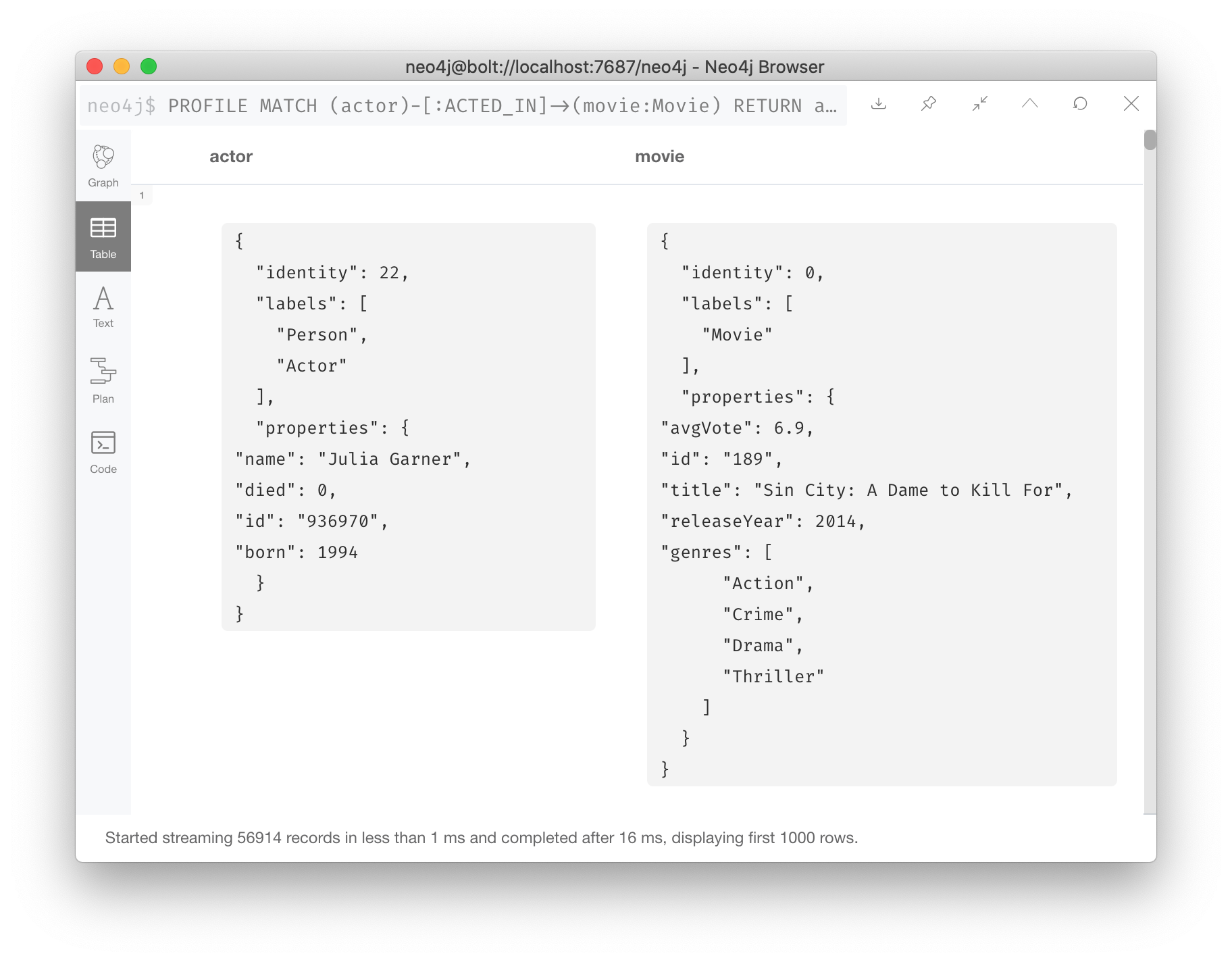

It can be done in the server’s web interface, arangosh (an interactive shell we ship) or through the HTTP API instead. You can review execution plan operators more in depth here. The node index scan is similar and is used for range queries. Neo4j is a Graph Database consisting of nodes connected together by relationships. With node index seek you have placed an index on some of your nodes that allow you to start a query at a specific node. CRUD operations are supported via the INSERT, UPDATE, REPLACE and REMOVE constructs, but collections and indices can’t be created or managed through AQL. The best execution plan operators are node index seek and node index scan. A lot of core functionality is based around the FOR loop construct. AQL is declarative, but also borrows concepts from programming languages. What that means is that you can do, for example, a prefix search over multiple collections and fields (ArangoSearch), then a traversal from the found documents to neighbor nodes at a variable depth, then resolve values in the found documents by using a join, and all that in a single query at high speed. Neo4j connects data as it’s stored, enabling queries never before imagined, at speeds never thought possible. It enables multi-model queries with one language backed by a single database core. According to its website: Neo4j is a native graph database, built from the ground up to leverage not only data but also data relationships. This returns the nodes, sorted first by their age, and. MATCH (n) RETURN n.name, n.age ORDER BY n.age, n.name. Cypher will sort the result by the first variable listed, and for equals values, go to the next property in the ORDER BY clause, and so on. In fact this actually represents 2 query plan caches. You can order by multiple properties by stating each variable in the ORDER BY clause. The USE clause at the beginning of the query selects the cineasts.latest graph for all the subsequent clauses.
Neo4j query movie#
USE cineasts.latest MATCH (movie: Movie ) RETURN movie.title AS title.

By default Neo4j will keep 1000 query plans in cache based upon the conf/nf parameter of dbms.querycachesize. Reading and returning data from a single graph. USE cineasts.latest MATCH (movie: Movie ) RETURN movie.title AS title. When a Cypher statement is first submitted Neo4j will attempt to determine if the query is in the plan cache before planning it. It was invented to overcome the limitations of SQL for dealing with schemaless data and the JSON document model. Reading and returning data from a single graph. Cypher is a declarative graph query language that allows for expressive and efficient data querying in a property graph.
Neo4j query full#
In comparison, AQL is a full multi-model query language – encompassing document, relational, search and graph query capabilities. There are also functions which can be called, like shortestPath(). The language can be classified as declarative, but less structured than SQL. One can also make use of CASE feature of Neo4j as seen below. Following is a breakdown of resource usage parameters, with descriptions, corresponding to the.
Neo4j query update#
And at the same time will also update the friendscount of both the node. An obvious but essential point of note when examining parameters of a particular query, is to ensure to analyse only the entries relevant to that to the particular query plan, as opposed to e.g. It also covers data definition with the CREATE keyword. Above query will update the Follow request status property from pending to accepted if and only if it is pending. Created by Neo4j, Cypher provides expressive and efficient queries for. Around that, clauses inspired by SQL like WHERE, ORDER BY and others are used to process the data. Cypher is a declarative graph query language that is used by developers worldwide. As you might already know, the pattern you want to find in the full graph is described in a visual way, like ASCII art. By default, the shell is interactive, but you can also use it for scripting by passing Cypher directly on the command line or by piping a file with Cypher statements (requires PowerShell on Windows). Cypher is a query language solely focused on graphs, created by and primarily used in Neo4j. Cypher Shell CLI is used to run queries and perform administrative tasks against a Neo4j instance.


 0 kommentar(er)
0 kommentar(er)
